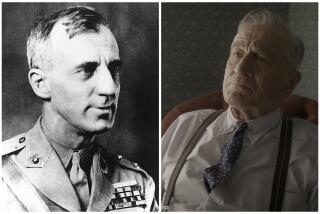Out of kilter
The “Dutch angle” (or the “Batman angle,” as it is often known in the U.S., for obvious reasons) was first used extensively in German Expressionist cinema -- “The Cabinet of Dr. Caligari” being a textbook example of the use of extremely odd angles. The nickname, “Dutch,” really comes from the word for German, “Deutch,” as opposed to the technique having anything to do with Holland. The idea of the off-level shot has long been used as a visual signal to an audience that all is not well, to portray a sense of unease and foreboding.
When seeking a visual reference for “Doubt,” writer-director John Patrick Shanley told me that he was drawn to the work of Carol Reed, though not to his most famous film, “The Third Man,” which uses the Dutch angle to perfection. John Patrick was drawn to a lesser-known film of his, “The Fallen Idol” (also known as “The Lost Illusion”), the plot of which centers around a boy who thinks he is a witness to murder and the web of secrets and half truths that surround this suspicion.
Carol Reed shoots much of the film from the boy’s perspective and utilizes the “Dutch angle” to great effect, heightening the boy’s conflicting emotions and his feeling of disorientation.
The plot of “Doubt” has many similarities. When it came to filming “Doubt,” John Patrick had a series of very specific moments where he wanted to use the same technique that Carol Reed had employed. “Doubt” is generally photographed in a naturalistic way with few elaborate camera moves or tricks that, hopefully, allow the audience to get immersed in the story with little distraction. The occasional use of Dutch angles, then, acts as a punctuation of sorts, a signpost to the audience that things are not necessarily all that they seem to be.
-- Roger Deakins, cinematographer
More to Read
Only good movies
Get the Indie Focus newsletter, Mark Olsen's weekly guide to the world of cinema.
You may occasionally receive promotional content from the Los Angeles Times.










